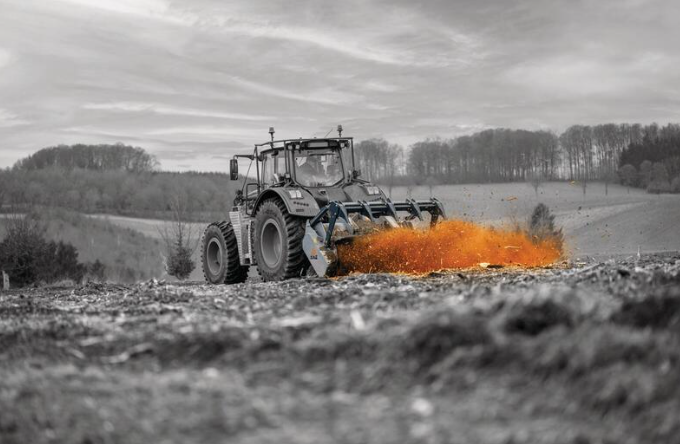Optimizing forest maintenance operations: a technical insight into mulchers for skid steers

As forest management evolves toward more agile and high-performance solutions, skid steer forestry mulchers have emerged as a powerful alternative to bulkier, less maneuverable equipment.
Compact yet capable of handling aggressive tasks, these machines provide a balanced solution for contractors working in dense vegetation or remote, difficult-to-navigate areas. Their technical configuration, when aligned with the demands of modern forestry duties, becomes a key factor in operational efficiency.
Core design principles behind skid steer forestry mulchers
Skid steer mulchers are engineered to meet the need for precision, maneuverability, and consistent cutting power. Frame width typically ranges between 60 to 80 inches, allowing operators to navigate narrow corridors and densely forested zones with ease. The structural integrity of the housing, often reinforced with high-grade steel, ensures resilience when contact with rocks, stumps, and debris occurs.
Two main rotor configurations exist: fixed-tooth and swinging-hammer systems. Fixed-tooth rotors offer greater precision and cutting depth, especially in forestry applications involving hardwood trunks and stumps. On the other hand, swinging hammers are better suited for lighter vegetation or mixed brush.
Hydraulic system efficiency and power transmission
Hydraulic performance is a determining factor in the output and reliability of a skid steer mulcher. For optimal functionality, most units require hydraulic flow rates between 20 and 40 GPM and operating pressures in the 3,000–5,000 PSI range. Machines equipped with variable-displacement piston motors adapt more effectively to load fluctuations and optimize torque at lower RPMs.
Efficient hydraulic power transmission minimizes energy dispersion, ensuring that most of the flow is translated into cutting force rather than heat. Skid steers must be correctly matched with the mulching head to avoid underperformance or damage.
Application-specific performance: forestry use cases
Forestry mulchers for skid steers are specifically tailored for demanding applications where space constraints and difficult terrain limit the use of larger carriers. Key use cases include underbrush clearing in managed woodlands, maintenance of right-of-way corridors for power lines and pipelines, stump reduction in reforestation projects, and fuel break creation in wildfire-prone regions.
The compact profile of skid steer mulchers allows access to steep slopes, between tree rows, or in tight buffer zones along utility lines. The high rotor speed and aggressive tooth configuration ensure consistent material reduction, even when faced with fibrous root systems or hardwood trunks up to 12 inches in diameter.
Key components and material selection
High-performance mulchers are built with wear-resistant components that extend machine life and reduce service intervals. Cutting tools are often made from tempered steel alloys or integrated with tungsten carbide inserts, offering superior hardness and edge retention under continuous impact.
Rotor shields and frame guards play a crucial role in protecting critical parts from debris impact and abrasive terrain. Modular tooth systems and bolt-on skids facilitate routine maintenance, enabling quick replacement and reducing downtime during intensive field operations.
Productivity gains and operational considerations
When properly matched and calibrated, a forestry mulcher on a skid steer can yield exceptional productivity – up to several acres cleared per day depending on vegetation density. Fuel efficiency is another advantage, as compact carriers typically consume less than larger machines without compromising shredding power in most use cases.
Operational considerations such as tooth type, hydraulic flow control, and terrain conditions must be factored in during equipment selection. A well-informed choice directly influences wear rates, maintenance cycles, and daily throughput, making the investment more cost-effective in the long term.
Technology aligned with field needs
Forestry mulchers designed for skid steers offer a robust combination of precision, maneuverability, and cutting performance. When selected based on specific job requirements and technical compatibility, these machines represent a strategic asset in modern forest maintenance. By aligning advanced hydraulic systems, engineered components, and optimized rotor designs, contractors can ensure efficient land clearing – no matter how challenging the environment.
Compact power, maximum results: FAE forestry mulchers for skid steers
Founded in Italy in 1989, FAE is globally recognized for its technical expertise in the design and production of advanced attachments for skid steers, excavators, tractors, tracked carriers, and special vehicles. The brand serves a wide range of professional sectors – including forestry, agriculture, road maintenance, and demining – where robust performance and operational reliability are critical.
Among FAE’s most versatile tools are its forestry mulchers for skid steers. These units combine high-strength materials with precision engineering to deliver continuous cutting efficiency, even under prolonged stress and in variable field conditions. Their rugged design ensures consistent output across diverse applications.
FAE skid steer mulchers are engineered to process a wide range of vegetation – including wood, brush, trunks, stumps, and roots – up to 12 inches in diameter. This level of capability makes them an ideal solution for professionals engaged in vegetation control, land clearing, fire prevention, and green space maintenance in both rural and urban settings.
The lineup includes three dedicated series and ten specific models, each tailored to meet different machine classes and field requirements. Whether working in dense undergrowth, managing right-of-way corridors, or clearing uneven ground, FAE mulchers deliver powerful, efficient, and field-proven performance.



